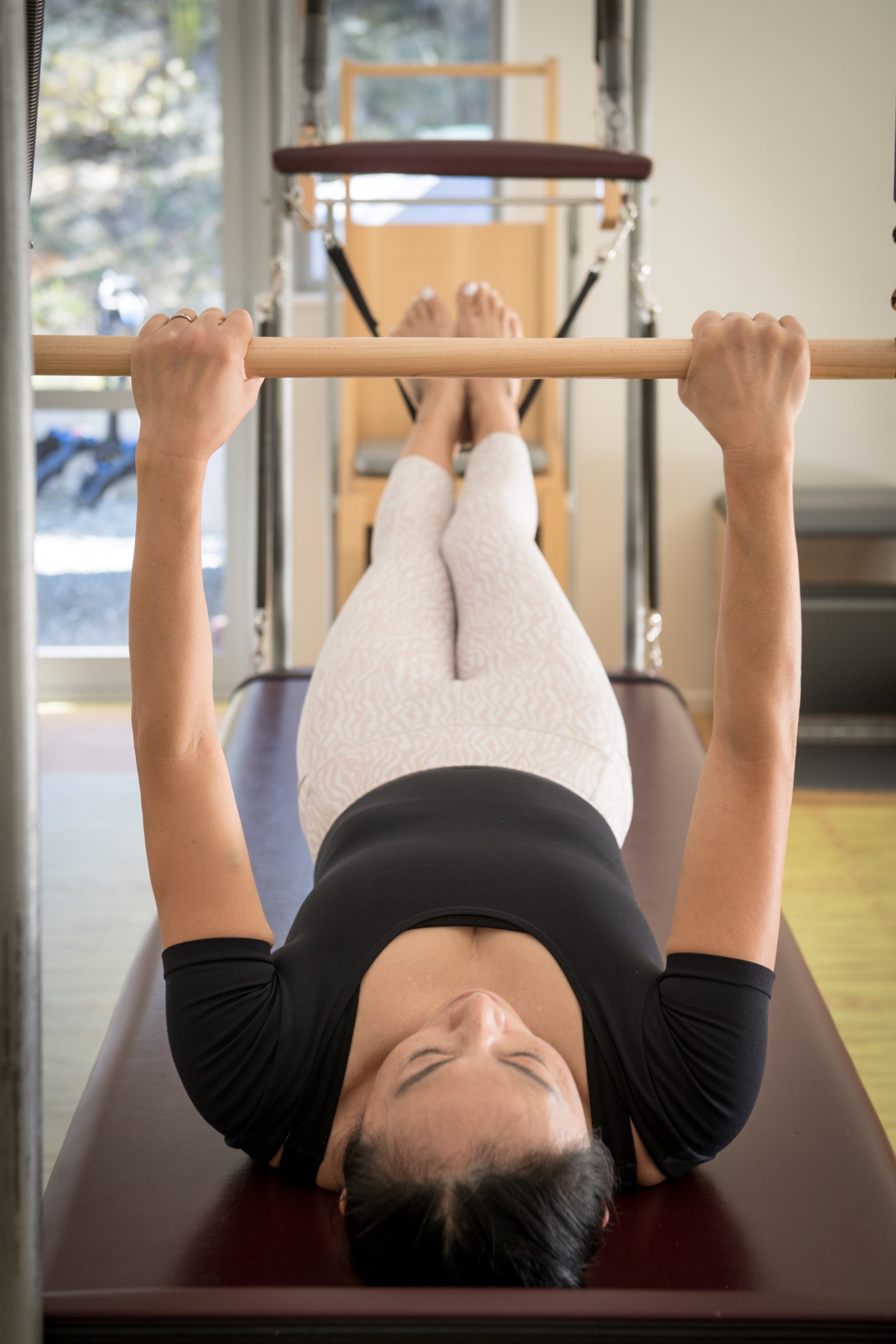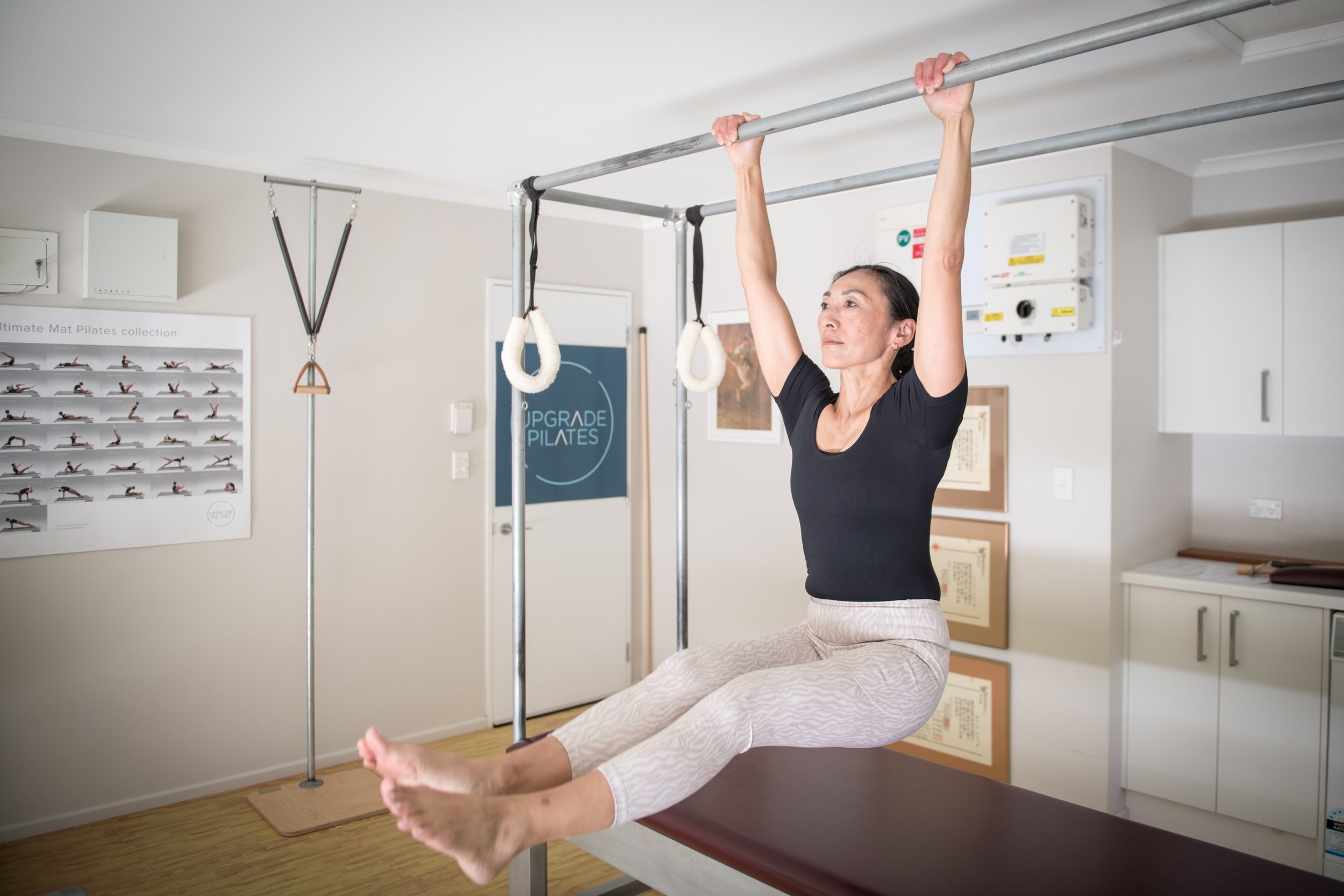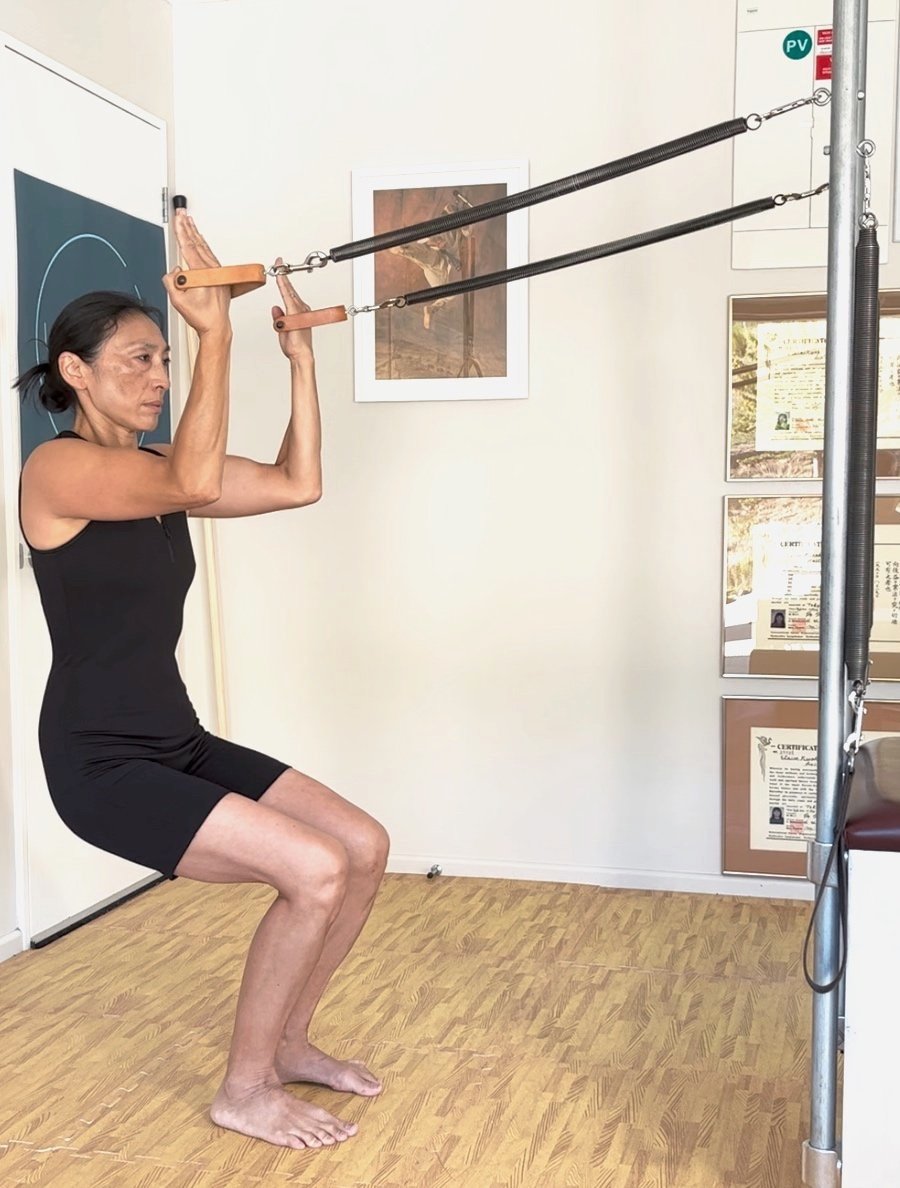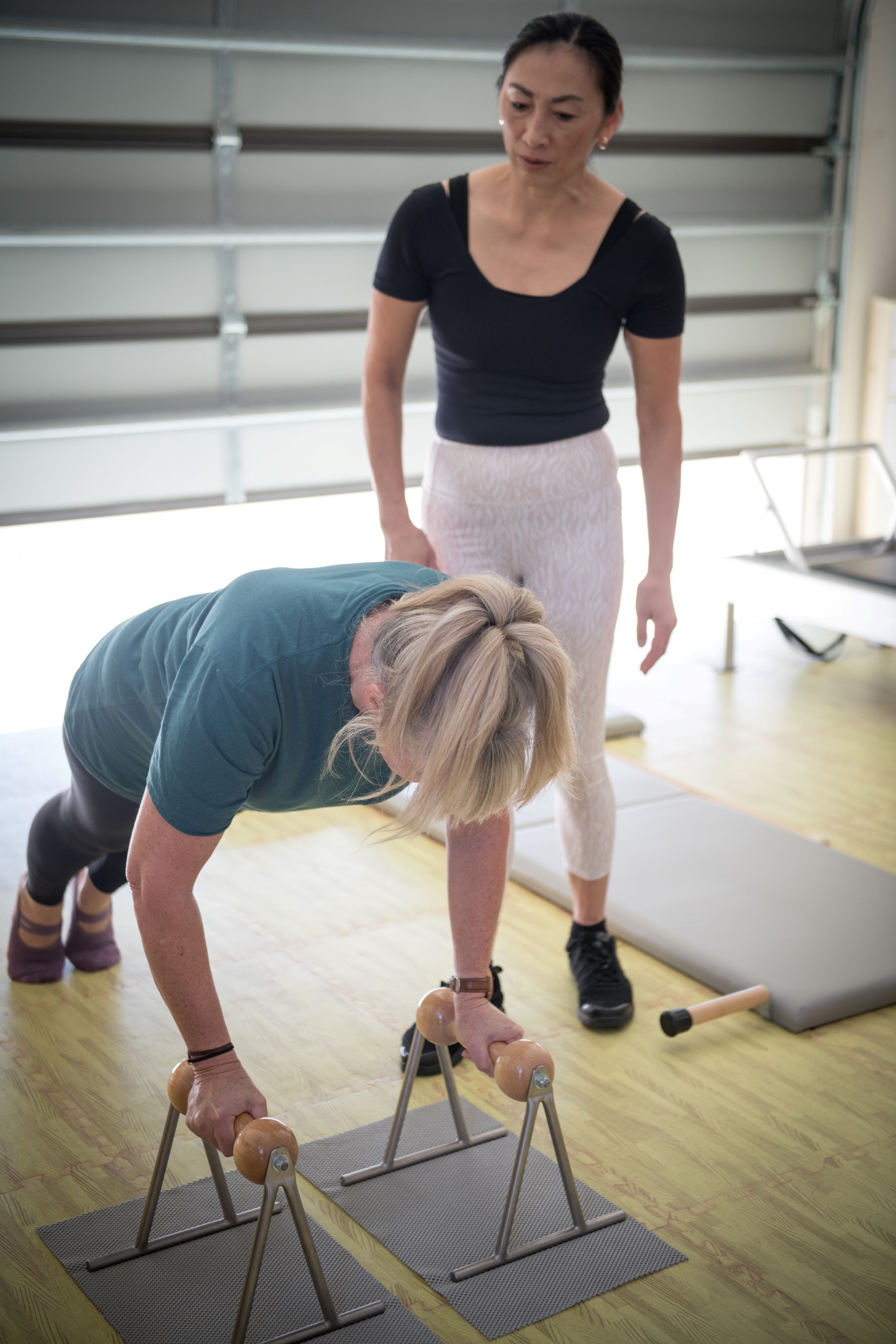Grip strength
The power of grip strength
Did you know that your grip strength can provide valuable insights into your overall health? Grip strength, often overlooked in fitness discussions, is an essential metric that can predict various aspects of your wellbeing including metabolic health, physical strength, and stamina. In this blog, we'll explore the significance of grip strength, its role in maintaining overall health, and the different grip types used in Pilates.
Why grip strength matters
Grip strength isn't merely a measure of how firmly you can hold onto objects; it serves as a reliable indicator of your overall physical health and is linked to various aspects of your wellbeing. Findings from the Prospective Urban and Rural Epidemiological (PURE) study indicate that weaker muscle strength is associated with a higher risk of shorter lifespans, especially in individuals dealing with chronic medical conditions. This extensive study, which included over 140,000 adults in high-, middle and low-income nations, revealed that reduced handgrip strength was a strong predictor of mortality in people across all income groups compared to traditionally acclaimed indicators like blood pressure.
The good news is that strengthening your grip strength doesn’t necessarily require specialised exercises. Research has shown that a wide range of activities, including walking, stretching, and resistance training, can positively influence your grip strength.
Protecting your mobility
One of the most compelling reasons to prioritise your grip strength is its direct correlation with mobility. As we age, the risk of falls and the subsequent impact on our mobility increase. A strong grip can serve as a lifeline in such situations, helping to preserve your independence and overall quality of life.
Building muscle mass and bone health
A weak grip often indicates insufficient muscle mass throughout your body. Maintaining and building muscle mass is essential for safeguarding your bones and overall health. Incorporating Pilates into your fitness routine, which offers low-impact resistance training using equipment with springs or resistance bands, can be a highly effective way to achieve this.
Grip types used in Pilates
Grip strength is a fundamental component in the world of Pilates, originating in the forearm muscles. Strengthening your forearms is essential for promoting overall arm and shoulder girdle health. Grip plays an important role in Pilates in a wide array of exercises and movements.
Here are some grip types used in Pilates:
Pronated or Overhand Grip
This grip involves holding a handle or bar with palms facing down and fingers wrapping over the top. It activates the forearm flexors, shoulder muscles (deltoids), lats and trapezius. Exercises like the Roll Down, Chest Expansion and Breathing on the Cadillac (see photo above) or gripping the Reformer footbar, employ this grip. For advanced practitioners, pull ups on the Cadillac (see photo above) require a pronated grip, engaging the back, shoulder, and forearm muscles for upper body strength.
Supinated or Underhand Grip
The supinated grip has palms facing up with fingers wrapped around a bar or handle. It works the biceps brachii, brachialis, and deltoid muscles, particularly the anterior portion, stabilising the shoulder joint. A prime exercise example is the Standing Squat while holding the roll-down bar and reaching upwards with the upper back, shoulders and arms while squatting, targeting upper back, shoulder and arm muscles. An underhand open grip with straight fingers is used similarly in exercises like Standing Squats using arm springs on the Cadillac (see photo above).
Neutral Grip
A neutral grip maintains wrists in a natural alignment, without flexion or extension. It engages core muscles and shoulder stabilisers, like the rotator cuff, supporting stable arm positions. It benefits wrist stability and forearm muscles, reducing the risk of strain. Examples include the Spine Corrector leg series and Push Ups with Push Up Devices (see photo above).
It’s important to maintain a neutral wrist position for all grips when doing Pilates to reduce the risk of wrist strain and enhanced overall stability, enabling more effective and safe movements.
In conclusion, grip strength is not just a measure of hand strength; it's a potent indicator of overall health. By enhancing your grip strength through various forms of strength training, you can significantly improve your wellbeing and reduce the risk of falls. So, let's take control of our health and start reaping the benefits of a stronger grip.
For more in-depth insights, read Dhru Purohit’s insightful article.




